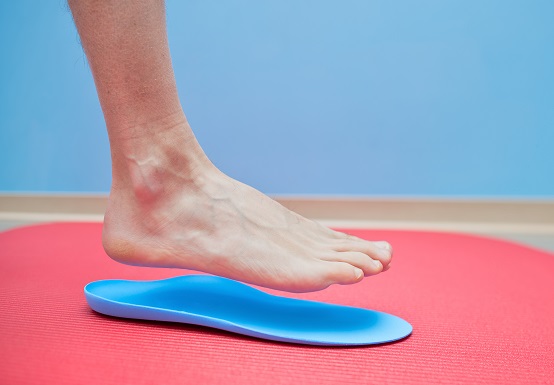
Orthotics, customised shoe inserts designed to correct foot problems, can help with common
conditions such as plantar fasciitis, bursitis and arthritis. Here’s a quick lowdown.
ORTHOTICS VS. INSERTS
Orthotics are prescription medical devices that are customised for your foot, while shoe inserts are over-the-counter purchases. Both provide extra cushioning and/or support for the foot. While inserts can certainly help some people, those with more serious biomechanical problems stand to gain greater benefits with orthotics.
If you are experiencing foot, leg or back pain, you should consult a podiatrist to see whether orthotics could help. If you decide to try them, your podiatrist will study your gait and take 3D images and a detailed mould of your foot or feet, which will form the blueprint for your orthotics.
RIGID VS. SOFT ORTHOTICS
Orthotics fall into two main types – rigid and soft. In addition, ankle foot orthotics extend beyond the foot and up the leg to assist with stability and mobility.
Rigid orthotics
Soft orthotics
Ankle foot orthotics
Orthotics Can Help with…
SKILL, SCRIPT, FIT AND FREQUENCY
The success rate of wearing orthotics depends on:
The message is clear. If you have been prescribed orthotics, make sure they fit well, wear them regularly, and your foot, leg and back problems should be eased if not solved.
REFERENCES
https://www.webmd.com/pain-management/what-are-shoe-orthotics#1
https://www.healthline.com/health/bone-health/orthotics
This article is taken from our My Alvernia Magazine Issue #42/43. Click here to read the issue on our website or on Magzter.